From the February 2021 issue of Apollo. Preview and subscribe here.
A noticeable friction arose towards the end of the 19th century between Russia’s old-world nobility and its merchant millionaires. The nobility were condescending to the brash new capitalist businessmen for their ignorance of etiquette, but envied their opulent lifestyles, aware they were being usurped. This process accelerated with the generation that came of age in the 1890s. Suddenly there were dozens of young men born into great wealth who were also educated and deeply cultured, having often been the first members in their families to attend elite schools and universities. Such were Sergey Shchukin and Ivan Morozov, who in the years leading up to the First World War amassed private collections of modern French art of such quality that they were without counterpart anywhere in the world, even in Paris. Although Shchukin’s collecting stopped abruptly in 1914, Morozov continued for three more years, having emulated his late brother Mikhail’s habit of simultaneously collecting modern Russian art. Among his last purchases were works by leading avant-garde rebels, and by Marc Chagall. Until recent times, Ivan Morozov has been an even more shadowy figure than Sergey Shchukin. A businessman who led an intensely private life, he figures in few memoirs, and left none himself. However, thanks to Natalya Semenova’s biography Morozov: The Story of a Family and a Lost Collection, published by Yale last year, and an unprecedented Morozov retrospective at the Fondation Louis Vuitton in Paris opening this year, his extraordinary legacy can now be fully recognised.
It is not irrelevant that Shchukin and Morozov’s collections were both established in Moscow, which was one of the most dynamic and forward-looking cities in the world before the 1917 revolution. Until the middle of the 19th century, Moscow’s reputation for being old-fashioned and provincial was largely deserved. Unlike the more secular St Petersburg, home to the imperial bureaucracy and the aristocratic elite, ‘Holy Mother Moscow’ remained the religious heart of Russia, known for its hundreds of churches, bright oriental colours, and ultra-conservative merchant class. After Alexander II’s reforms, however, the city rapidly became an industrial powerhouse, known more often as ‘Calico Moscow’ due to its thriving textile manufacturing businesses. The suffocating world of patriarchal despotism began to disappear in the 1860s, at which time the cotton mills of Pavel Tretyakov, for one, started reaping vast profits, enabling him to invest in Russian art (he would later found what is today the Tretyakov Gallery). By the close of the century, Moscow was a booming, thoroughly Europeanised metropolis, bristling with creative energy. It had always been an article of faith for Russian merchants to engage in widespread charitable works, but profits from their flourishing businesses were now also ploughed into progressive cultural ventures as art patronage became the norm rather than the exception. Three of Sergey Shchukin’s brothers became collectors.
The Morozovs were by far the most famous of the many merchant dynasties in Moscow. A sprawling family of staunch Old Believers and colourful characters who combined piety with an enthusiasm for modern technology, they had created their vast empire in the 1850s, when the former serf entrepreneur ‘Savva the First’ divided up his textile business among his five sons. Timofey, who went on to become Russia’s most important industrialist, was the youngest, and the most capable. Both his sons, graduates of Moscow University, became art patrons. Savva (‘the Second’) poured tens of thousands of roubles into the Moscow Art Theatre, founded in 1898, while Sergey provided the penniless landscape artist Isaak Levitan with the conditions in which to paint masterpieces, and founded a museum of traditional peasant handicrafts. Like their cousins Savva and Sergey, Mikhail and Ivan Morozov were a year apart in age, but born a decade later, in the early 1870s (making them contemporaries of Sergey Diaghilev, who, as a typical St Petersburg noble, was their opposite). They were great-grandchildren of Savva the First – offspring of his middle son Abram, who inherited the family’s cotton mill in Tver. The last years of their childhood were spent in an opulent new mansion close to the Kremlin built by their redoubtable widowed mother, a noted philanthropist. She troubled to give her sons a superlative education, which extended to engaging the budding ‘Russian impressionist’ Konstantin Korovin for two years to give Mikhail and Ivan weekly art lessons.
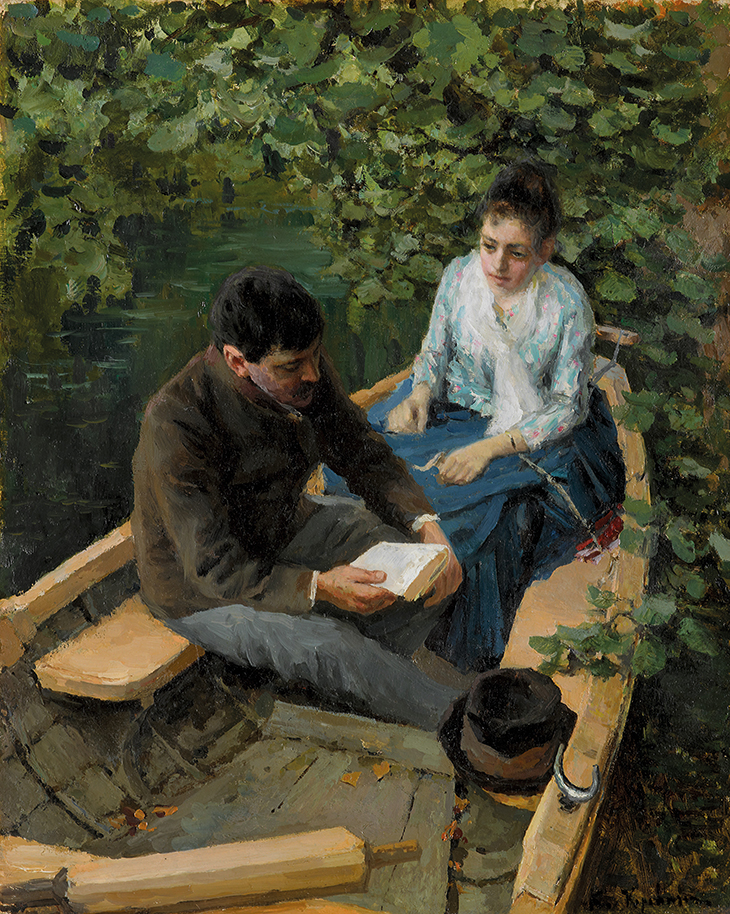
In a Boat (1888), Konstantin Korovin. Courtesy Tretyakov Gallery, Moscow
It was Mikhail, the elder brother, who began collecting art first, as a 19-year-old university student in 1889. He would spend the next 10 years buying Russian paintings before becoming an habitué of the leading Paris galleries, his passion for collecting beginning in earnest when he came into his considerable inheritance in 1891. That year he married Margarita Mamontova, whose grace and refinement balanced his nouveau-riche exuberance, and moved with her into a house whose empty walls cried out for art. Quick-witted and impulsive, he soon developed a discerning eye, buying important work by the young generation of Moscow painters, such as Korovin’s In a Boat, and Levitan’s Fresh Wind. The Volga, completed in 1888 and 1895 respectively. Neither painters were renegades, but in the context of Russia’s insular and conservative art world, dominated by the Imperial Academy in St Petersburg and the nationalist Association of Travelling Exhibitions, which promoted a dogmatic realism, they offered something new. Mikhail Morozov then gravitated to Valentin Serov, another young talent leading the charge against the establishment, whom he commissioned to paint his portrait. He also daringly became one of the first patrons of the notorious Mikhail Vrubel, whose original, experimental style was routinely branded as decadent.
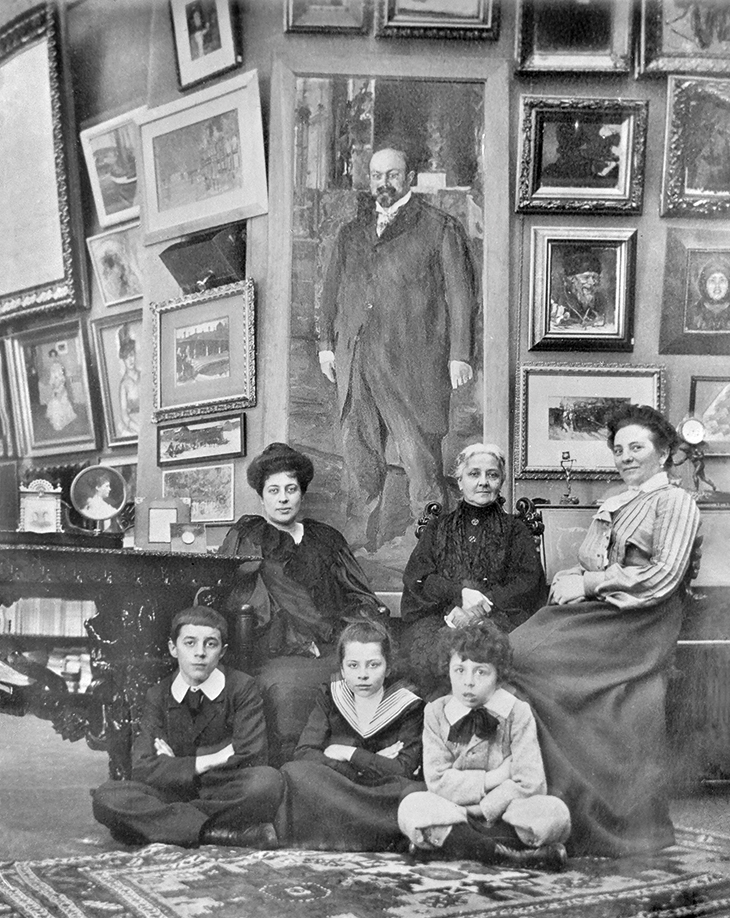
Margarita Morozov (far left) with her children and others in 1903, in front of the portrait of Mikhail Morozov by Valentin Serov (1902)
Ivan also began his collection with Russian art, buying his first landscape painting in 1891, before setting off to complete a degree in natural science at the Zurich Polytechnic Institute. Far more reserved and sober-minded than his flamboyant elder brother, he continued to add to his modest collection after he came home and took over the family business. During his student years in Switzerland he had been an enthusiastic amateur landscape painter, but his onerous duties at the Tver Textile Mill left him little time for leisurely pursuits. Mikhail showed no interest in ever becoming involved in the family business, and nor did their younger brother Arseny. A noted eccentric whose greatest passions were hunting and dog-breeding, in the late 1890s he was taken up with building a Gothic-Moorish castle next to his mother’s classical mansion. Inspired by the faux-medieval Pena Palace in Portugal, it faithfully reproduced its mishmash of styles, while adding a facade borrowed from the House of Shells in Salamanca. The building looked absurdly out of place in central Moscow, and provoked widespread ridicule even before it was completed.
Mikhail Morozov began to undertake regular art expeditions to Paris in 1898, at the same time as Sergey Shchukin, who was 16 years older. He never fully abandoned his eclectic tastes, but after buying works by Rodin and Corot from Paul Durand-Ruel, he began to be more adventurous. In 1900, three years before Shchukin, he became the first Russian collector to buy a painting by Gauguin (La Pirogue, 1896), soon following it up with a second Tahitian work which also came from Ambroise Vollard’s gallery. In 1901, he was the first Russian collector to buy a Van Gogh (La Mer aux Saintes-Maries, 1888). Within a few years his collection included Renoir’s Portrait de Mademoiselle Jeanne Samary (1878), purchased from the Bernheim-Jeune Gallery, as well as works by Monet, Degas and Toulouse-Lautrec. He was also the only Russian collector of his time to buy a work by Munch. White Night. Aasgardstrand (Girls on the Bridge) (1903) was purchased at the Salon des Indépendants a few months before Mikhail Morozov died in 1903, at the age of 33, having been unable to curb his life of excess. In his last years, he had begun to patronise the cosmopolitan exhibitions in St Petersburg with which Diaghilev was attempting to modernise Russian artistic life, showing a particular interest in the work of Konstantin Somov. In his obituary, Diaghilev recalled with affection Mikhail Morozov’s extravagant Muscovite character, full of energy and joie de vivre.
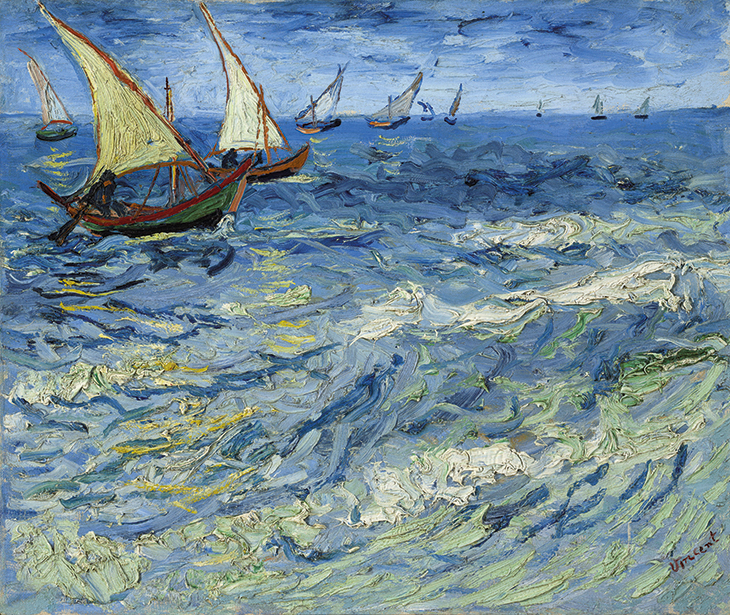
La Mer aux Saintes-Maries (1888), Vincent Van Gogh. Courtesy the Pushkin State Museum of Fine Arts, Moscow
While Mikhail Morozov was becoming increasingly entranced by artistic insurgents in Paris, Ivan was recovering from uncomfortable encounters with political radicals at the factory in Tver. The revolutionary movement had begun to gain momentum, and in 1897 he had to deal with his first strike. Despite the school, hospital, and other charitable institutions that had been established by his mother, working conditions for the 7,000 employees, most of whom lived on site in red-brick barracks, remained exploitative. After a second strike in 1899, Ivan decided to move back to Moscow and run the business from afar, settling in an elegant mansion on Prechistenka, one of the city’s most aristocratic streets. Here too were many empty walls on which to hang paintings, particularly after the fashionable architect Lev Kekushev had replaced the baroque interiors with a more sober design. Morozov’s gallery of French art took shape on the first floor; Russian art was kept separately on the ground floor.
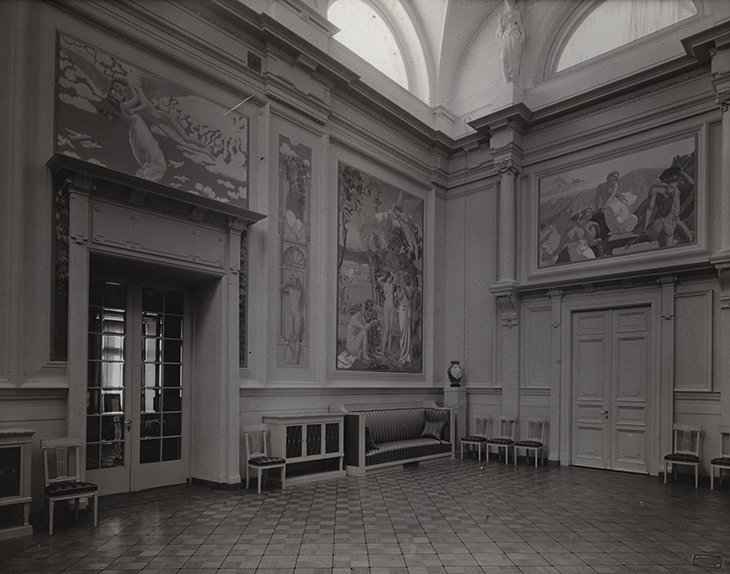
The Music Salon in Ivan Morozov’s mansion on Prechistenka Street, Moscow, with L’Histoire de Psyché panels by Maurice Denis, published in the magazine Apollon in 1912. Photo courtesy the Pushkin State Museum of Fine Arts, Moscow
For the next couple of years, Ivan kept a low profile, but he too was a bon viveur. He had always eschewed his brother’s ostentatious lifestyle, but he now stepped into his shoes as a collector, echoing his tastes in Russian art. From 1904 he began making regular twice-yearly trips to Paris to go to the Salon des Indépendants and the Salon d’Automne, also visiting dealers and individual artists’ studios. It was after he lent some works to the retrospective exhibition of Russian art Diaghilev organised at the Salon d’Automne in 1906 that Morozov got into his stride. After he was awarded the Légion d’Honneur, and made an honorary member of the Salon, he commissioned Maurice Denis to paint 13 panels on the theme of Psyche for the Music Salon of his house (which were installed by the artist in 1909). In 1907, four years after their daughter was born, he finally dared to marry Evdokia, the chorus girl he had met at a popular Moscow nightspot, and felt ready to buy his first Cézanne, who became his favourite painter. In 1908 he bought Van Gogh’s Le Café de Nuit (1888) at one of the first exhibitions of French and Russian avant-garde art to be held in Moscow, and in 1910 he commissioned Bonnard, another favourite artist, to paint a triptych – La Méditerranée – for the staircase of his house. That year he also followed his brother in commissioning Serov to paint his portrait. Morozov’s stocky figure is famously depicted sitting at a table against the backdrop of Matisse’s Fruits et Bronze, completed earlier in 1910. It had been his influential elder rival Sergey Shchukin who introduced him to Matisse, from whom Morozov commissioned the Triptyque Marocain, painted 1912–13 during a long spell in Tangier. The two textile magnates maintained friendly relations, but were very different characters, and Ivan Morozov mostly followed his own path.
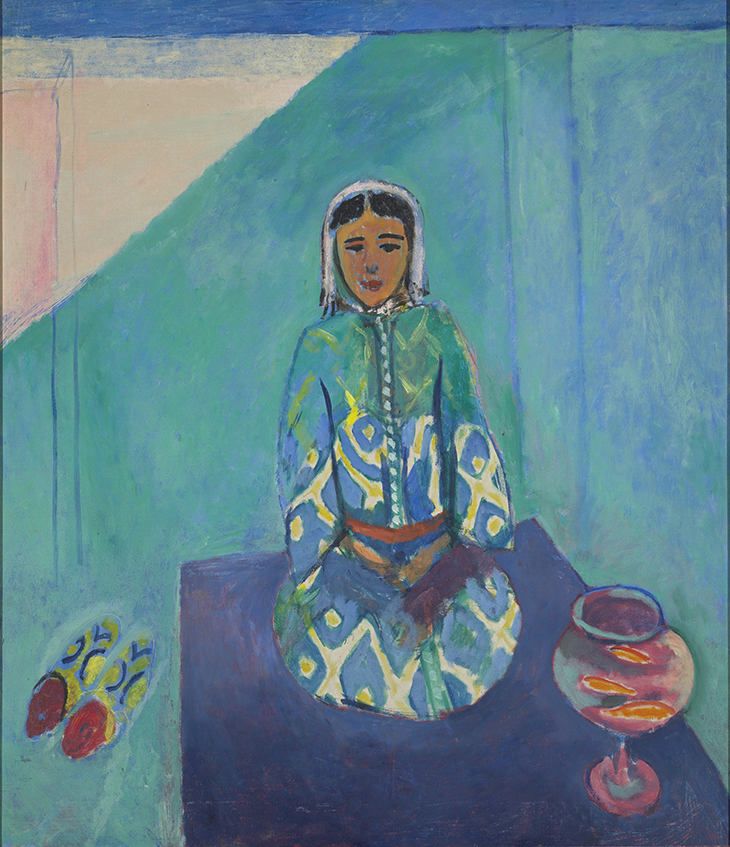
Triptyque Marocain: Zorah sur la Terrasse (central panel) (1912–13), Henri Matisse. Courtesy the Pushkin State Museum of Fine Arts, Moscow; © Succession H. Matisse
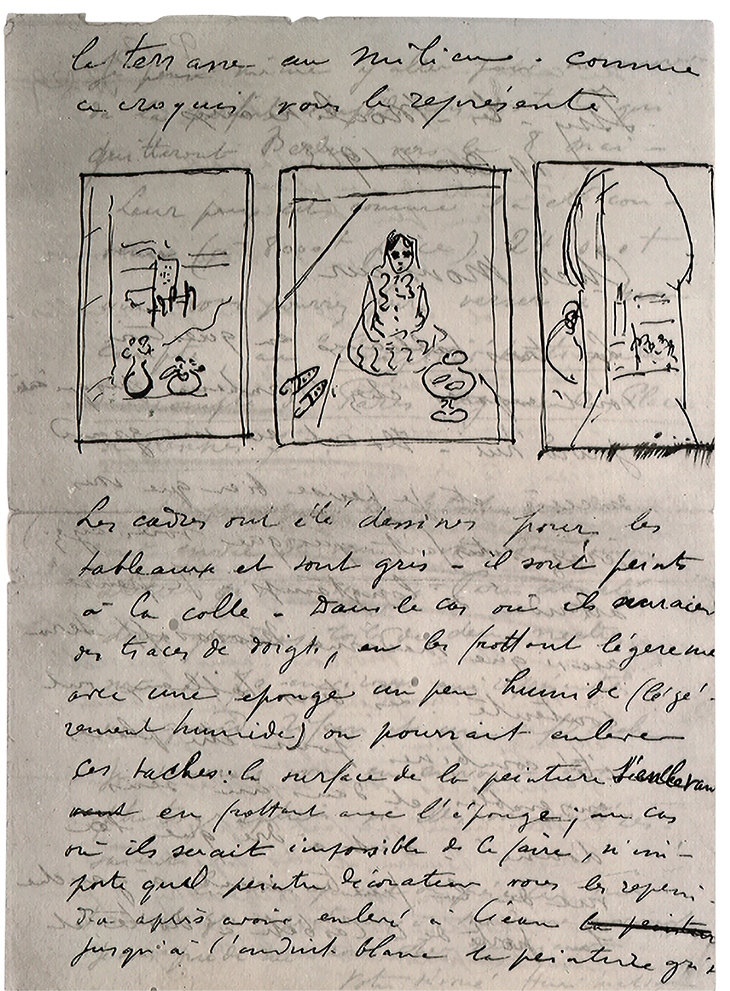
Letter (1913) from Henri Matisse to Ivan Morozov describing, with accompanying sketch, the panels of the Triptyque Marocain. Courtesy the Pushkin State Museum of Fine Arts, Moscow; © The Estate of Ivan Morozov
Where Shchukin was mercurial and liked the challenge of the extreme avant-garde, Morozov was methodical (he kept meticulous accounts), and simply bought what he liked. Shchukin followed his own instincts, while Morozov was happy to rely on trusted advisers. Serov was one; another was the critic Sergey Makovsky, who wrote the first revelatory article about Morozov’s collection of French art for the St Petersburg journal Apollon in 1912. Unlike Shchukin, who opened his collection to the public, Morozov had kept his doors firmly shut to all but a select few. His approach to collecting was also far more systematic. When Makovsky was startled by a blank space at the end of a wall covered with Cézannes, Morozov explained that he was still looking for the right work from the artist’s late period. Eventually he would own 18 paintings by Cézanne (10 more than Shchukin), covering all stages of his career. Morozov was the first to bring a painting by Picasso to Russia when he bought Les Deux Saltimbanques (1901) in 1908, but he went on to acquire only two others. Like Acrobate à la Boule (1905), which had formerly belonged to the Steins, the Portrait d’Ambroise Vollard (1910) was purchased in 1913, and was the sole cubist work in his collection, albeit a very fine one (Shchukin, by contrast, owned 50 Picassos). A similar tendency can be detected in Morozov’s collection of Russian avant-garde art, which exploded into life in Moscow in 1910. He was happy to buy works by Larionov and Goncharova, for example, but drew the line at abstraction, finding Kandinsky and Malevich too extreme.
Shchukin and Morozov both left revolutionary Russia soon after their art collections were nationalised and opened to the public as the Museums of Western Art, numbers 1 and 2 (Morozov was initially appointed ‘deputy director’ at his former home, and allocated three rooms to inhabit with his family). Morozov died in Karlsbad in 1921 at the age of 49, and a few years later his collection of Russian art was transferred to the Tretyakov Gallery. In late 1927 Alfred Barr, the future director of MoMA, made a historic visit to Moscow, and was stunned by the quality of the former Shchukin and Morozov collections. In 1929 the European paintings were united as the State Museum of New Western Art in Morozov’s former residence, on the newly renamed Kropotkin Street, but the sheer abundance of works (19 Monets, 29 Gauguins, 50 Matisses, for example) now meant that there were too many for public display. Thereafter, the collections’ integrity was lost. Four paintings, including Van Gogh’s Le Café de Nuit, were bought by the American businessman Stephen Carlton Clark in 1933 as part of a clandestine Soviet operation to raise foreign currency, while dozens of works were peremptorily despatched to the Hermitage Museum in Leningrad, including two parts of Matisse’s Triptyque Marocain. In exchange, Old Masters were brought from the Hermitage to Moscow to raise the new capital’s prestige.
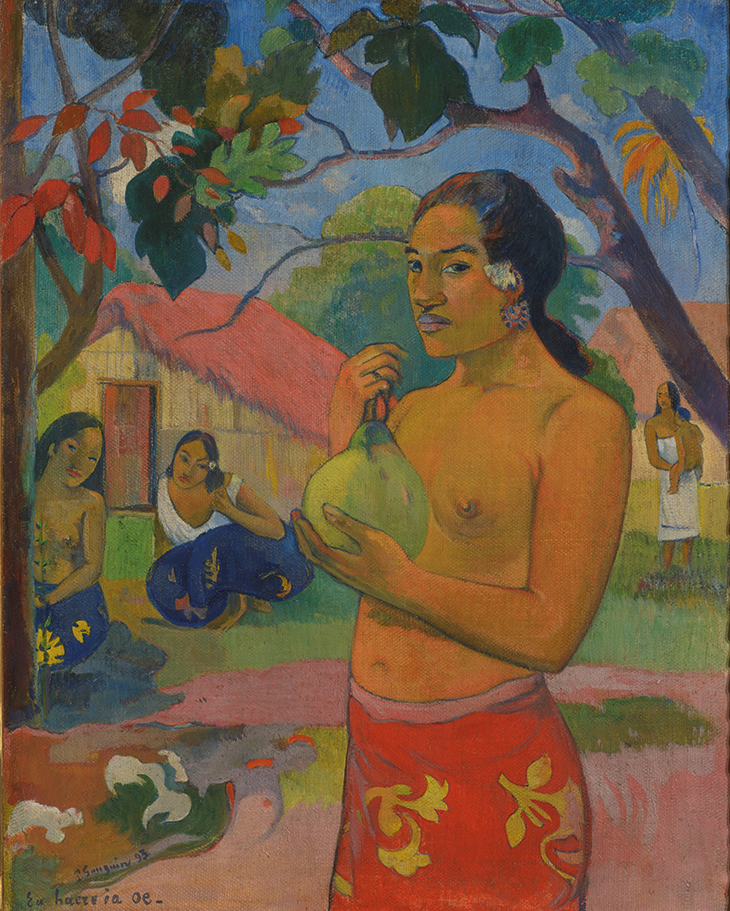
La Femme au Fruit (1893), Paul Gauguin. Photo: © The State Hermitage Museum, 2020
In 1948, at the height of Zhdanov’s anti-cosmopolitanism campaign, Stalin signed an order for the permanent closure of the State Museum of Modern Western Art, on the basis that the propagation of foreign, bourgeois, formalist art was politically harmful to the Soviet masses. Staff were given 15 days to transfer the most important works to the Pushkin Museum (as Moscow’s former Museum of Fine Arts was now called – despite its lack of connection to the poet – following the centenary of his death). It was only due to the intervention of Antonina Izergina, curator of 19th-century Western painting at the Hermitage, that hundreds of other paintings, particularly the most avant-garde ones (and hence politically more risky), were rescued and taken to Leningrad.
The collections began to be shown again after the death of Stalin in 1953, and the three parts of Matisse’s Triptyque Marocain were finally reunited in 1968. There was no indication of provenance, however. For political reasons, Morozov’s name was not even mentioned until the Pushkin Museum’s pathbreaking ‘Moscow-Paris’ exhibition in 1981. The show was the brainchild of the museum’s formidable director, Irina Antonova, who died in November 2020 at the age of 98. Cognisant that Shchukin and Morozov had wanted to leave their collections to the city of Moscow, as Tretyakov had, Antonova wished fervently to reunite them, and her remarkable 52-year tenure ended poignantly in 2013 after her appeal to President Vladimir Putin fell on deaf ears. A more fitting tribute to her legacy than the virtual revival of the Museum of New Western Art (www.newestmuseum.ru) has been the project to reunite the original collections for the first time in exhibitions shown in Moscow, St Petersburg and Paris. Shchukin starred in 2016–17; now it is finally time for Morozov to step into the limelight.
‘The Morozov Collection: Icons of Modern Art’ runs at Fondation Louis Vuitton, Paris, from 22 September–22 February 2022.
From the February 2021 issue of Apollo. Preview and subscribe here.

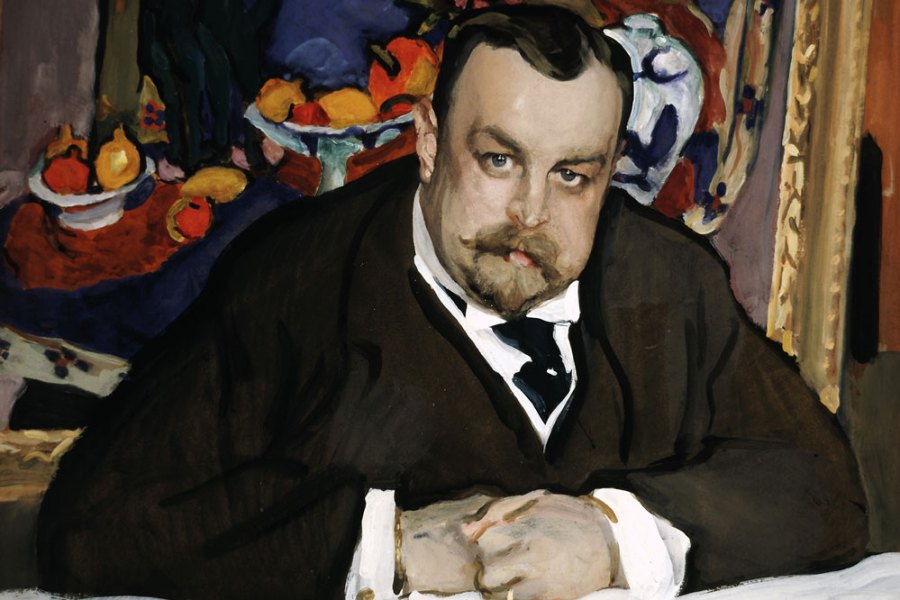
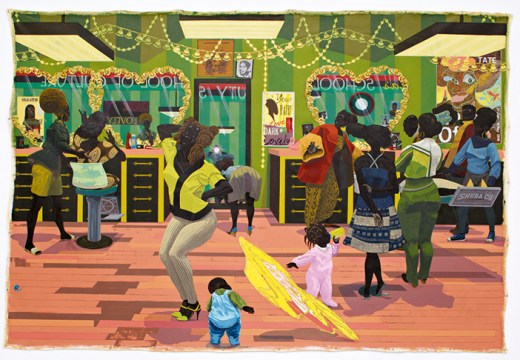
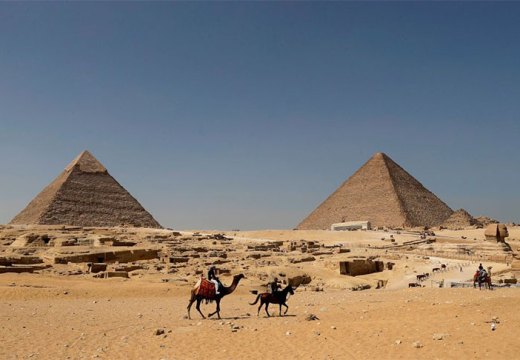
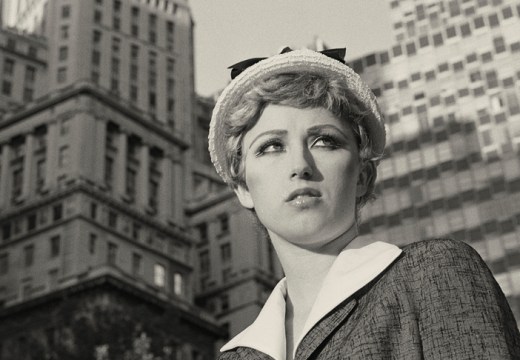









![Masterpiece [Re]discovery 2022. Photo: Ben Fisher Photography, courtesy of Masterpiece London](http://www.apollo-magazine.com/wp-content/uploads/2022/07/MPL2022_4263.jpg)
Suzanne Valadon’s shifting gaze